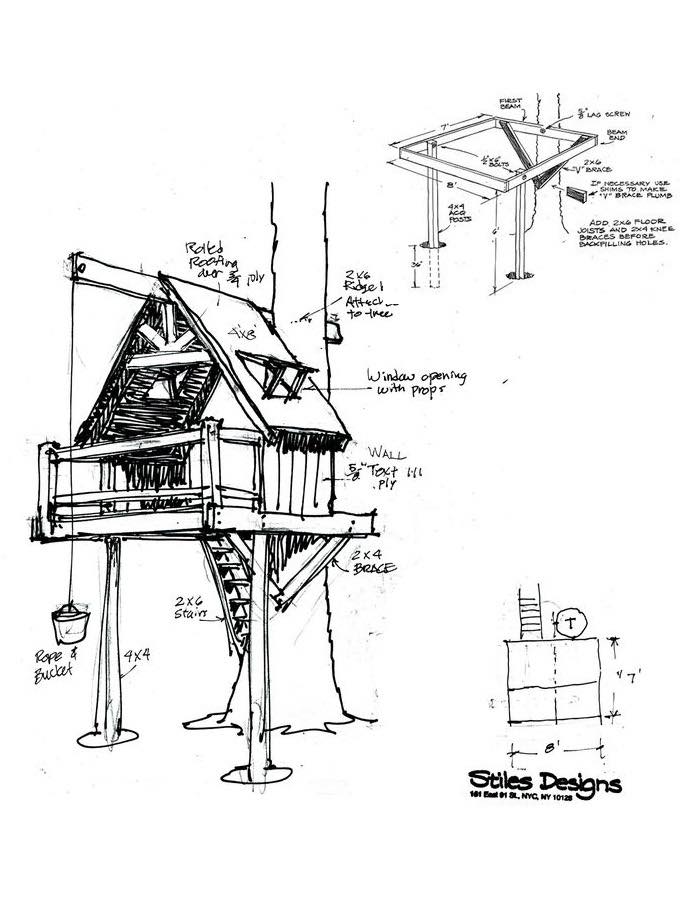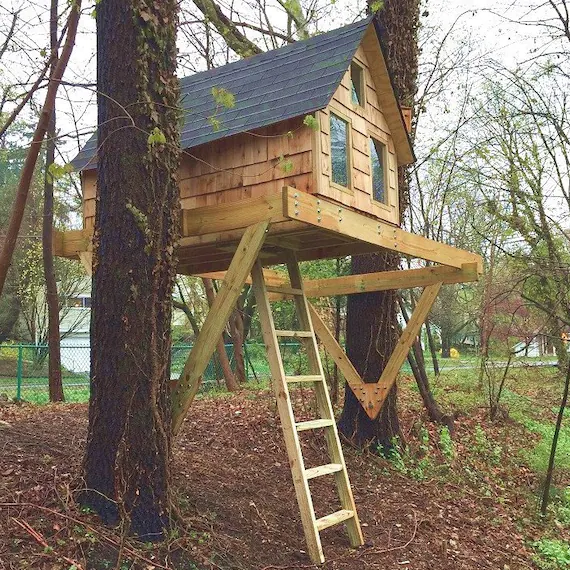
Planning and building a treehouse that is safe and doesn’t harm the tree involves several critical steps and considerations. Here’s a comprehensive guide:

1. Plan Your Build
Consult an Arborist: Have a tree expert assess the health and stability of your chosen tree.
Check Building Codes: Ensure your plans comply with local regulations.
Design and Sketch Plans: Create detailed blueprints for your treehouse.
2. Choose the Right Tree
Tree Types: Prefer deciduous trees like oak, maple, apple, beech, or certain coniferous trees like hemlock, cedar, and Douglas fir.
Avoid Weak Trees: Steer clear of trees like cottonwood, willow, spruce, or birch.
3. Consider Tree Size and Experience
Trunk Diameter: For a basic 8×8 feet treehouse, choose a tree with at least a 12-inch diameter trunk.
Tree Age: Balance the tree’s experience and age; too young or too old trees may not be ideal.
4. Check for Tree Health
Look for signs of disease or stress, like broken branches, leaning trunks, unusual leaf patterns, fungal growth, shoots, lack of bark, or dripping sap.
5. Allow Room for Growth and Movement
Heartwood Bolting: Bolt the treehouse in the tree’s heartwood and use spacers for growth accommodation.
Leave Space: Ensure there’s space for the tree to sway and bend without harming itself or the treehouse.
6. Protect the Tree’s Bark
Avoid cutting into the tree. Use proper pruning techniques for small branches and avoid ropes or cables that can damage the bark.
7. Avoid Damaging Roots
Prevent soil compaction and avoid altering soil depth. Plan pathways and play areas to protect root zones.
8. Distribute Hardware and Weight
Use specialized hardware like Tree Attachment Bolts and space them appropriately.
Distribute the treehouse’s weight evenly to avoid stressing the tree.
9. Opt for Lightweight Construction
Choose lightweight materials and avoid heavy fixtures to reduce stress on the tree.

10. Limit Height for Safety
For children’s treehouses, build no more than 10 feet off the ground. Consider wind factors for higher constructions.
11. Use Professional Plans
Consider getting professional design plans for optimal stability and minimal tree stress.
12. Ongoing Tree Health Maintenance
Monitor the tree’s health post-construction and maintain its natural environment.
Final Thoughts
Building a treehouse requires a balance between achieving your dream design and maintaining the health and safety of the tree. By following these tips, you can create a treehouse that coexists harmoniously with its natural support system, providing a safe and enchanting retreat for years to come.

